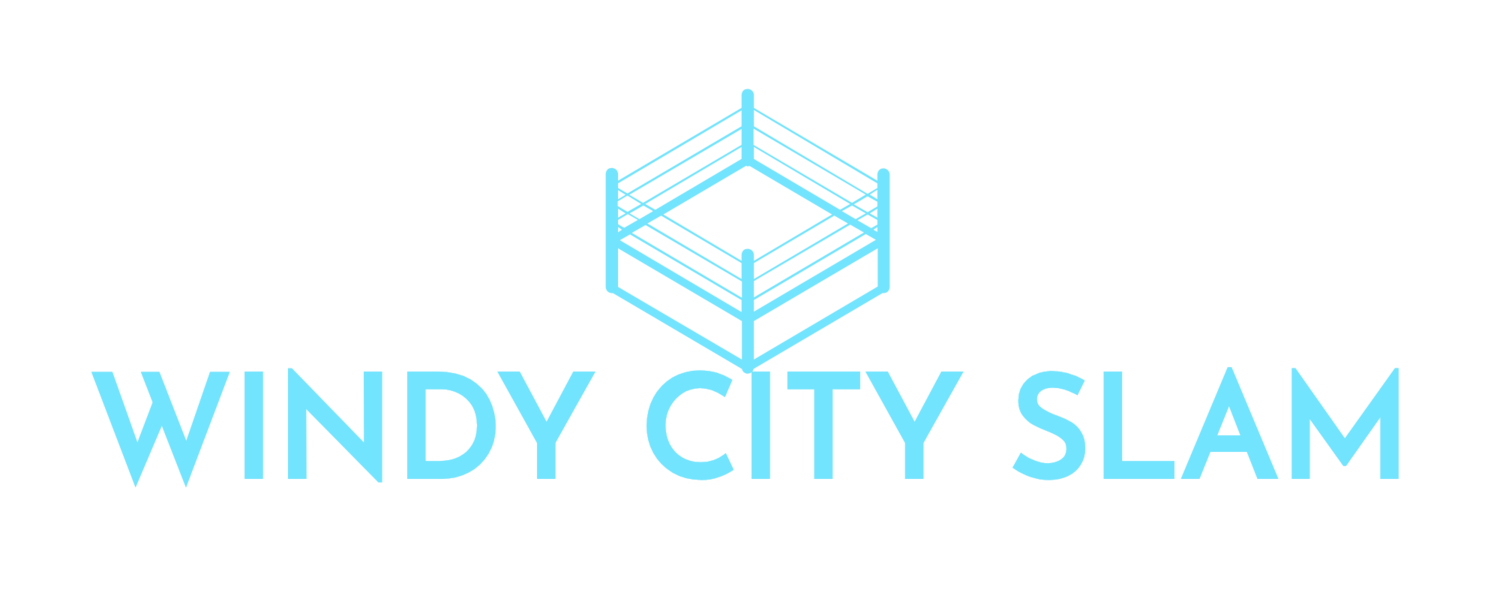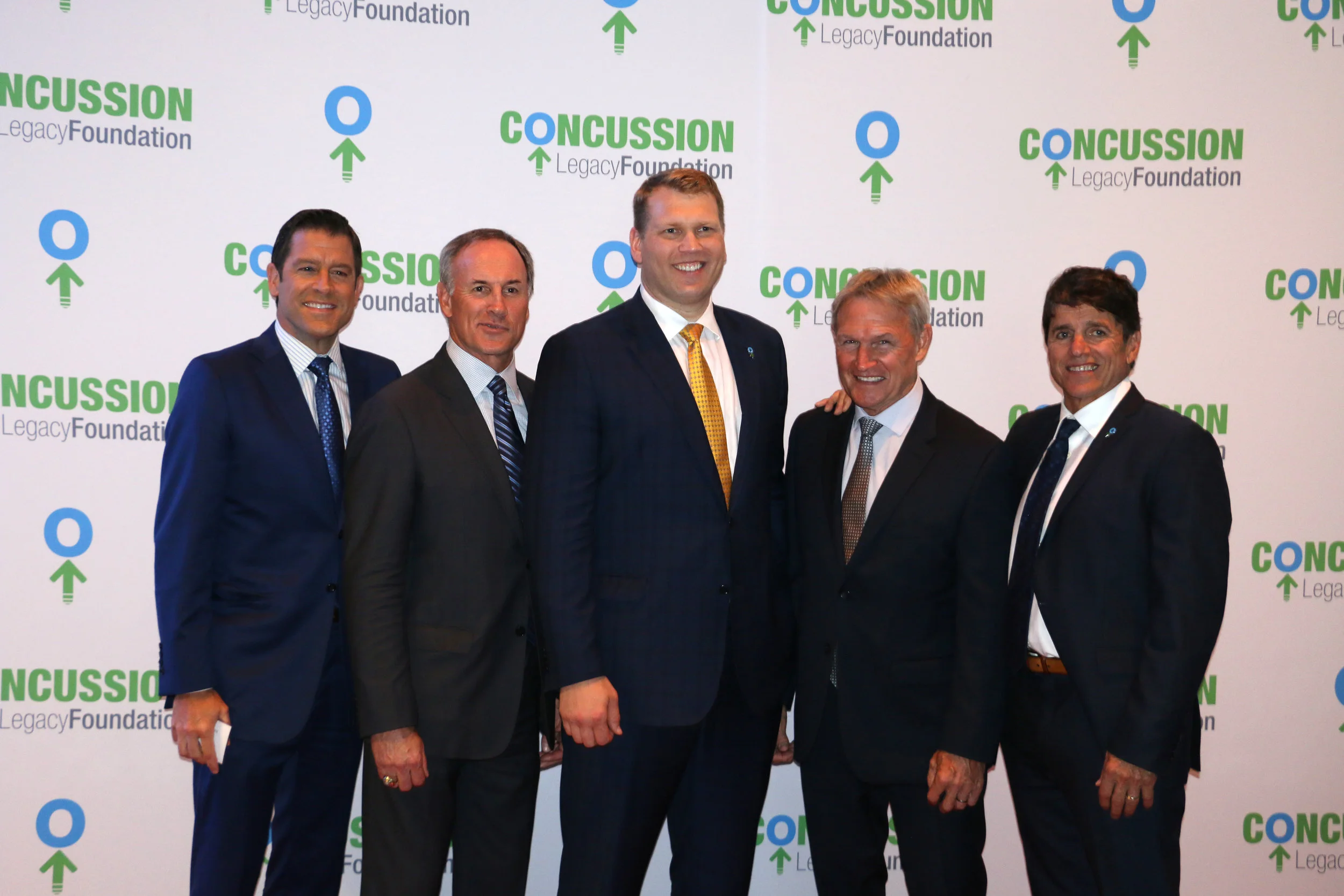The real main event: Chris Nowinski faces his toughest opponent
By Mike Pankow
August 3, 2018
Chris Nowinski’s greatest opponent wasn’t Bubba Ray Dudley, Tommy Dreamer or Maven, nor was it an Ivy League offensive lineman.
For years as a multisport athlete at Hersey High School in Arlington Heights, Ill., to a run-stopping defensive lineman at Harvard, to the Raw brand in WWE, Nowinski took his lumps – literally.
Those “dings” he suffered from years of head trauma on the gridiron and the wrestling ring were something a little more serious than even he had ever imagined.
Nowinski, 39, the co-founder of the Concussion Legacy Foundation, told stories of the toll of his over a dozen documented (and undocumented) concussions before speaking at the foundation’s annual Chicago Honors event in late June.
“I cover it up well,” Nowinski said. “I’m not normal. I don’t sleep well. I take a drug to prevent headaches. I tried to get off it a few weeks ago, I couldn’t. My brain is not (normal) … I’ll take what I have but it’s not what it was. But for me, it’s manageable.”
In the macho world of professional wrestling, like for many years in football, there rarely was an opportunity to take time off. It basically was: Suck it up and fight through the pain.
A former runner-up on the initial season of WWE’s “Tough Enough” reality show in 2001, Nowinski believes he suffered four concussions during his three years in professional wrestling.
“Each one I didn’t realize was a concussion,” he said. “I kept wrestling and didn’t take a day off. It appeared to add up over time.”
Finally, there was one “ding” that put Nowinski on the shelf for a long time. It turned out to be his final performance in WWE.
During a tag team match against the Dudley Boyz on a house show in the summer of 2003, Nowinski received a jarring kick to the head from Bubba Ray Dudley.
“There was one move, a kick in the corner, I was just too close,” Nowinski said. “It wasn’t Bubba’s fault. The crowd was quiet. We were both just trying to put a little extra energy into it. I wasn’t protecting myself. I was trying to make it look good.”
On that night everything changed.
The injury was so severe that Nowinski had no chance but to take time away from the ring. After some time on the sidelines with symptoms persisting, WWE referred Nowinski to Dr. Robert Cantu, who shined a light on what was happening with his brain.
“(Dr. Cantu) was the first guy that made me appreciate it. I didn’t even know what a concussion was and what it meant,” Nowinski said. “They were advising athletes to rest them. I’d never heard that. I realized had I known that, I would have done things differently and wouldn’t have ended up like this. That’s where I got the idea we need to change the dialogue on this.”
Nowinski was never cleared for a return to WWE, though the company kept on him board as an ambassador until his contract expired.
“That year was such hell that even after 12 months of symptoms, I started saying ‘Look, even if I get better, I can’t go back.’ ” he said. “I had no idea what to do next. Luckily, they let me continue to do community service programs for them. I did an announcing tryout. I was terrible at it.”
Becoming the advocate
During his time on the sidelines from WWE, Nowinski was brainstorming.
He began an odyssey to study concussions, their symptoms and their effects on the human brain. Finally after three years of diligence, Nowinski had his work published in a book called “Head Games: Football’s Concussion Crisis” in 2006.
In 2007, Nowinski and Cantu united to form the Sports Legacy Institute, which has since been renamed the Concussion Legacy Foundation (CLF). The duo focused on the degenerative condition called Chronic Traumatic Encephalopathy (CTE), which is caused by repeated brain trauma and affects mood, behavior and memory, often in an extreme manner.
After it was discovered that former Philadelphia Eagles All-Pro safety Andre Waters had CTE when he committed suicide in 2006, Nowinski and Cantu made it their mission to acquire the brains of deceased athletes to continue their study. The CLF has received over 600 brains, 300 from football players, with pledges from more than 3,600 living athletes to donate theirs.
The foundation has helped raise better concussion awareness across all sports from the professional ranks to youth leagues. Nowinski has been a conductor of change, though that change has met a great deal of resistance over the years.
While the NFL has greatly improved their protocol on head injuries over the last decade, the league’s adaptation moved at a glacial pace.
Nowinski displayed candor with his disappointment in the league’s initial resistance.
“They have (improved), but being involved in those discussions, most of those changes were driven by the players’ association,” he said. “With the NFL, we couldn’t ask nicely, it took negotiation for safety. An odd thing. They fought it every step of the way and kept finding ways to fight it.”
With the amount of head injuries and the dangerous collisions in hockey, former Chicago Blackhawks forward Daniel Carcillo recently took the NHL to task about how they view concussions.
“I think it’s great when players become advocates,” Nowinski said of Carcillo, who has pledged to donate his brain. “I’m disappointed the NHL continues to say CTE is not real. Somebody’s got to speak truth to power. Guys who’ve been out there who are trusted by the players are important advocates.”
During his stop back in Chicago in June, Nowinski acted almost as an auctioneer during the upscale dinner at IUOE Local 399, soliciting donations for CLF’s continued mission. The foundation raised over $200,000 that night.
During the Chicago Honors event, CLF feted former Chicago Bears safety Gary Fencik, a member of the famed 1985 Super Bowl champions. After some lighthearted verbal sparring with fellow Ivy League graduate Nowinski, Yale alumnus Fencik committed to donating his brain toward the cause.
They also honored Liz Nicholson Sullivan, whose husband, Gerry, played nine seasons as an offensive lineman with the Cleveland Browns and before that with the University of Illinois. Sullivan is an advocate and caretaker for her husband, who is heavily affected by the symptoms of CTE.
Among others at the Chicago event were former WWE personality Mike Adamle, who played football at Northwestern University and with the Bears and is longtime sports broadcaster for NBC5 Chicago, and former Bears safety Doug Plank, who introduced his former teammate Fencik.
While there are still many questions unanswered, Nowinski feels he has accomplished the initial part of CLF’s mission.
“I think we accomplished our first goal, which was concussions,” he said. “Everybody knows concussions matter. There are laws in 50 states. Coaches are required to be educated. It’s a tremendous public health victory. I think we really opened up Pandora’s box on CTE though. I don’t think we realized what we were dealing with and that we’d find so many cases and such terrible outcomes. We keep getting better at concussions. The next decade the fight is going to be over CTE. It’s entirely preventable, but not treatable at this point.”
WWE still in his heart
Though thoroughly engrossed with CLF over the last decade, Nowinski still has ties to WWE. He occasionally attends events in the Boston area, where he now resides, and recently posted an Instagram photo of him and WWE women’s superstar Natalya, daughter of the legendary Jim “The Anvil” Neidhart.
WWE executive Paul Levesque (aka Triple H) is part of CLF’s Board of Directors. WWE Hall of Famer Mark Henry, whose in-ring career spanned over two decades, is currently a member of CLF’s National Advisory Board as is NWA President and Smashing Pumpkins singer Billy Corgan.
One of WWE’s most popular superstars, Daniel Bryan, was out of the ring for the last three years because of concussion symptoms. Bryan, who actually announced his in-ring retirement in February 2016, finally was given the green light to return by a team of specialists that included Cantu just before WrestleMania 34.
“It was great when he was shut down when he had the symptoms he had,” Nowinski said. “That seemed appropriate despite his objections. I think they went through a lot of hoops to make sure it made sense to clear him. The fact Dr. Cantu evaluated him and determined it was OK for him to return was what convinced me, because I trust him. I’ve seen him ‘retire’ many guys. If he thought Daniel was OK, I’m fine with that.”
WWE Hall of Famer Mick Foley, who frequently took headshots from steel chairs during his matches in the 1990s and early 2000s, recently told Nowinski he would donate his brain for research.
Nowinski, who even had to stop playing pickup basketball following his WWE career because of further concussions, relishes turning that negative into a positive. He still interacts with the roster every so often and educates them on the dangers of concussions.
Nowinski also believes WWE has stepped up with their concussion awareness procedures. The company has evolved in recent years by preventing excessive head trauma by banning maneuvers such as chairshots to the head and restricting piledrivers.
“I think they’ve embraced this knowledge more than anybody,” Nowinski said. “I really take pride in the fact they invite me to lecture the talent every year. I share with them the latest and greatest science and the stories on how to do this more safely and here’s why.
“The culture has changed in that locker room, because they’ve tried very hard to do that. They recognize it’s also good for the business. They don’t want to lose a John Cena to postconcussion syndrome. It’s a terrible thing. It’s terrible for the fans, it’s terrible for the business. With proper education and management, you can prevent that.”
For more on the Concussion Legacy Foundation: https://concussionfoundation.org/
For more on CTE: https://concussionfoundation.org/CTE-resources/what-is-CTE
Chris Nowinski, right, stands on the ring apron during a mixed tag team match on Monday Night Raw at the Bradley Center in Milwaukee on Sept. 2, 2002. Nowinski teamed with Molly Holly against Bubba Ray Dudley and Trish Stratus. (Photo by Mike Pankow)
Chris Nowinski, center, poses with CBS Chicago news anchor Rob Johnson (from left), former Chicago Bears safety Gary Fencik, former Bears safety Doug Plank and former Bears running back and WWE personality Mike Adamle at the Concussion Legacy Foundation's Chicago Honors on June 28, 2018. (Photo by Mike Pankow)








